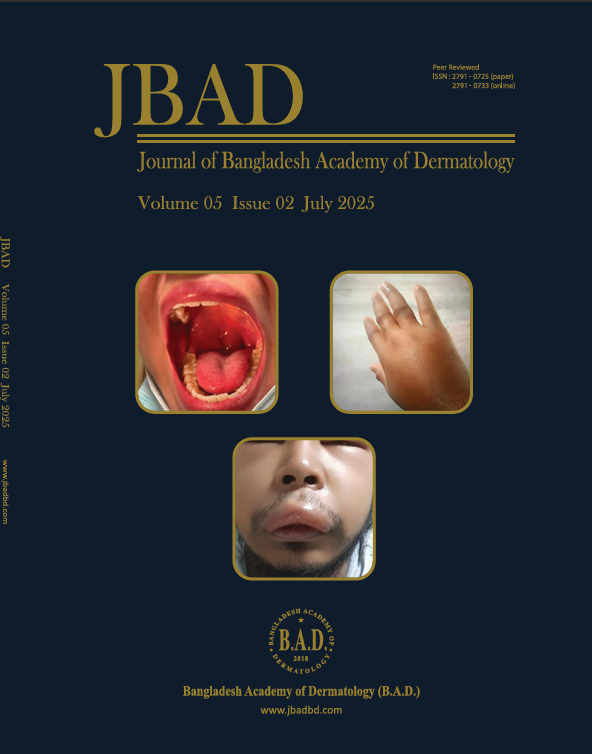Safety and efficacy of topical Crisaborole 2% ointment in the treatment of psoriasis on face, intertriginous and anogenital areas: A vehicle-controlled cross-over study
Abstract Background: Psoriasis in some sensitive areas like the face, anogenital and intertriginous areas significantly affects patients' quality of life, and psycho-social and sexual well-being. Due to the special structural and functional characteristics of these areas, all sorts of topical agents are not suitable for use on lesions in these areas. Objective: To study the safety and efficacy of crisaborole 2% ointment in treating psoriasis on the face, anogenital and intertriginous areas. Methods: It was a randomized vehicle-controlled cross-over study. Thirty-two patients with psoriatic lesions on the face, anogenital and intertriginous areas were enrolled purposively. Selected single lesion was treated with vehicle ointment twice daily for 4 weeks followed by 2 weeks washout period. Then each lesion was again treated with 2% crisaborole ointment twice daily for 4 weeks. Psoriasis disease severity will be measured by the Target Lesion Severity Scale (TLSS) at weeks 0, and 4 during both treatment periods. Changes in TLSS scores were compared between the two groups. Result: Topical 2% crisaborole is effective in the treatment of psoriatic plaques as the mean reduction of TLSS score of each treated lesion of the patients was significant after 4 weeks of application compared with baseline and it is significantly better (p<0.001) than vehicle (p=0.257. Few adverse effects were noted including burning, itching and redness. Conclusion: Topical 2% crisaborole ointment is a safe and effective non-steroidal option for treating psoriasis lesions on the face, anogenital and intertriginous areas though for complete lesional clearance a longer treatment period may be needed. Keywords: Crisaborole, PDE-4 inhibitor, anogenital psoriasis, intertriginous psoriasis, facial psoriasis |

